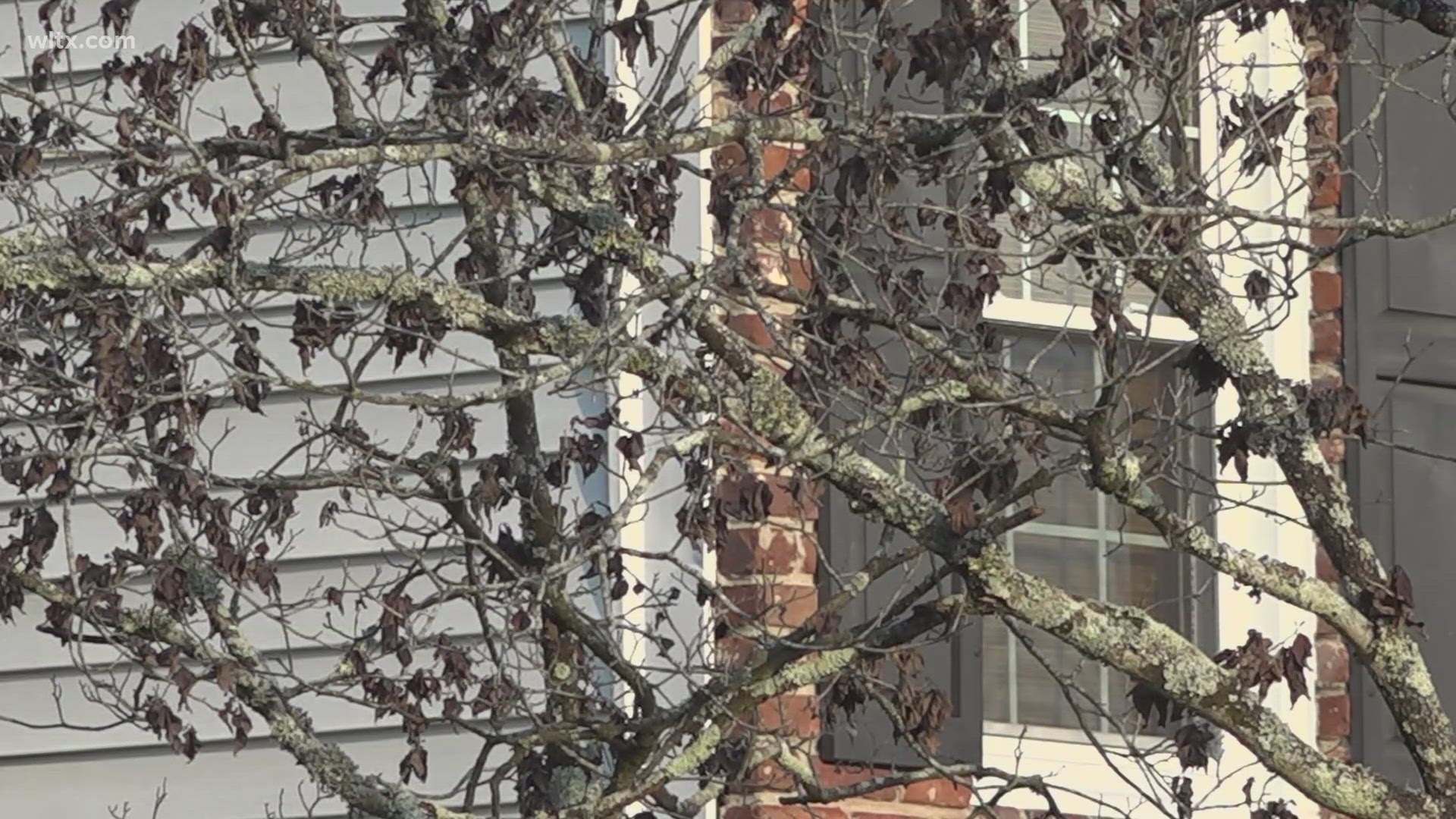COLUMBIA, S.C. — After a very wet August, some residents across the Midlands are experiencing increased pests that could damage their trees and yards.
Caroline Harmon with Ledford’s Pest Control said that anytime a storm with a lot of moisture passes through, it leaves perfect breeding conditions for insects such as mosquitos and Palmetto bugs.
“This time of year, especially after the storm, we’ve got a lot of mosquito calls coming in," Harmon said. "And people are starting to see more Palmetto bugs and water bugs moving around. We’re starting to ease into what we call our rodent season. Early fall those rodents are coming in trying to find a place that’s warm and dry. Unfortunately that’s a lot of people’s houses.”
Experts say that there are other serious bugs that you may never see. One of those is the Dogwood Borer moth.
Jackie Jordan from the Clemson Cooperative Extension Office said the moths can kill a fully-grown tree from the inside out.
"They can girdle a whole entire branch because they’re moving around on the inside,” Jordan said. "So you’re seeing damage from that. You can see the bark actually lift off. It does cause branch death and can cause tree death."
Despite their name, Dogwood Borers can affect a wide variety of trees.
"They’ll go after Apples, Elms, Hickory... there’s a bunch of different trees they can go after," Jordan explained. "A tree in stress is going to have more insect problems. And so when you’re looking at heat, when you’re looking at drought, when you’re looking at extreme moisture where the soil stays overly moist for an extended period of time, that’s all stressful for the tree.”
Longtime Columbia resident Tom Brantley said he’s seen a decrease in the Dogwood population.
"Part of the family ritual when we were growing up was, in the spring, to take rides through Shandon to admire all the blooming dogwoods," Brantley said. "It’s been quite alarming to me to see the demise of the ornamental trees in and around Columbia. So, I think it’s just something that we need to take very seriously. It’s going to have to be a concerted effort over decades.”
Amanda Leveck lives in southeast Columbia and has a tree in her front yard that the Dogwood Borer impacted.
"We’ve noticed a significant decline (in our tree) since 2018," Leveck said. "But when it gets to where it’s in trunk and obviously not going to survive, we’ll remove it and not replace (the tree) because this is a playground.”
Knox Leveck, 10, said he’s looking forward to having more play space in his front yard.
“This tree right here is kind of in the way," Knox said. "So, if we’re playing football or kickball, (the ball is) going to get caught up in the trees. So when we cut it down, I’ll probably be in the yard a lot more."
Jordan from Clemson said that once the Dogwood Borer moth damages trees, certain pesticides can be used to eliminate the pests.
To prevent the insects from reaching your tree, Jordan recommended laying three inches of mulch around the tree's base, extending out to the dripline of the branches.

